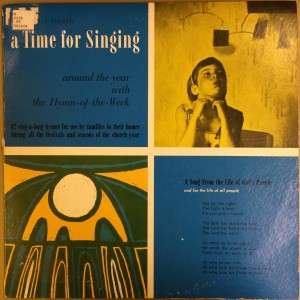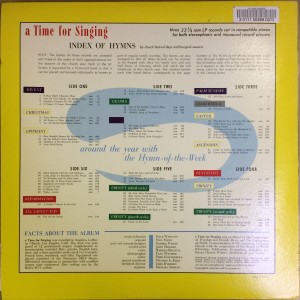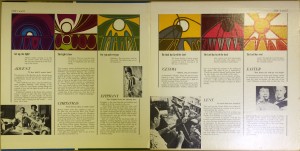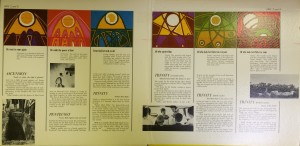This week, amidst the vast shelves of St Olaf Libraries, I stumbled upon a track on the album Back in the Saddle Again: American Cowboy Songs. I was intrigued by the adjective “American” to describe the songs on that record. Does this album answer the question we’ve been asking all semester? Spoiler alert — No.
One song on the LP caught my eye. It was titled “Sioux Indians”. Nervously, I took a listen, only to hear more slander and racism which has been called-out in so many other blog posts. The cowboy singing the song tells the story of the folklore and encounter with a tribe of Sioux Indians.
“We heard of Sioux Indians all out on the plains
A-killing poor drivers and burning their trains,–
A-killing poor drivers with arrows and bow,
When captured by Indians no mercy they show.”
These lyrics depict the Sioux Indians as savages! They are upset with that they are burning the trains and killing the drivers… but did do they remember who’s land they built the train tracks through in the first place? The song continues, and the cowboy himself encounters some Sioux Indians.
“While taking refreshment we heard a low yell,
The whoop of Sioux Indians coming up from the dell;
We sprang to our rifles with a flash in each eye,
‘Boys,’ says our brave leader, ‘we’ll fight till we die.'”
The complete other that the cowboys have created when describing. They limit the Native Americans to primitive sounds like a “yell” or “whoop”. When the song itself begins with the cowboy introducing himself and how he is going to “sing” you a song.
For me, the worst part is when the cowboys and the Indians duel.
“They made a bold dash and came near to our train
And the arrows fell around us like hail and like rain,
But with our long rifles we fed them cold lead
Till many a brave warrior around us lay dead.”
“Fed them cold led” is such a demeaning drastic image. The verb “fed” used as if it was a service or kindness. They also poke fun at the fallen Native Americans mockingly calling them “warriors”. This piece “Sioux Indians” by Marc Williams continues the racism behind turning Native Americans into others – in this case savages.
Citations
Recorded Anthology of American Music, Inc. (1983). Back in the Saddle Again : American Cowboy Songs.
William, Marc. Sioux Indians (A Cowboy Chant). Spotify. link




